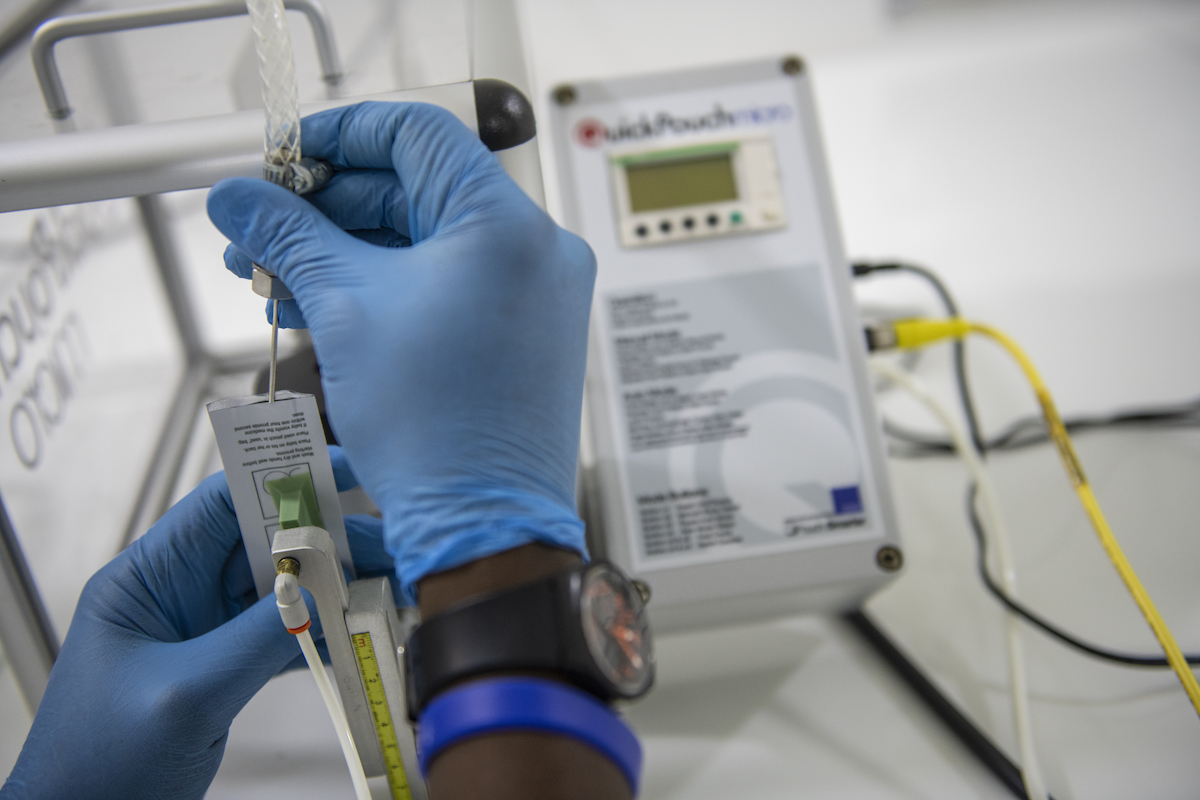The Elizabeth Glaser Pediatric AIDS Foundation (EGPAF) recognizes that elimination of pediatric HIV and AIDS cannot be achieved and sustained without strong health systems.
Effective local leadership at national, regional, and community levels is critical to ensuring a viable and efficient health system that delivers quality services to women, children, and families. We work to improve all aspects of health systems through improving service delivery, strengthening the knowledge and skills of a health workforce, improving health information systems, increasing access to essential medicines, improving health financing, and building leadership and governance capacity. Key health systems strengthening approaches used within EGPAF’s programs include the following:
Health Systems Strengthening: Rooted in Quality Improvement
Supported health services should be integrated, quality oriented, and people centered. Quality improvement (QI) systems and processes can help ministries of health and partners meet these requirements—providing not only outstanding health programs and services but also a positive customer experience with enhanced resource efficiency. Incorporating QI into national health care strategies is a prudent approach to cost savings, while increasing positive health outcomes for a population.
The key strategy behind QI lies in bringing teams together to recognize gaps and test a few small changes at a time. QI is improvement science—striving to understand how systems work and how people are responding to these systems, promoting organizational change, providing adult learning, and tapping into local knowledge. To truly improve health care delivery, one must understand complex systems and processes to know where the gaps are and how to address them. This requires robust systems to collect, analyze, and use quantitative and qualitative data to effect change.

Our QI Approach
At EGPAF, we implement an expansive form of QI that focuses not only on health services but also on program development, operations support, and organizational effectiveness. Working holistically, with monitoring and evaluation staff, technical assistance providers, and QI-specialized staff, and hand-in-hand with local leadership, we have, to date, employed QI approaches in more than 1,000 health care facilities in 14 countries. We have developed and completed more than 2,000 QI projects that have used components such as the PSDA (plan–do–study–act) cycle, the improvement collaborative (which involves health facilities working together to share ideas and tackle weaknesses), involvement of clients in service delivery changes (consumers’ perspectives are essential in building responsive health systems), and use of real-time data through knowledge and use of new and robust technology to ultimately strengthen health systems.
The Program Optimization Approach
Noting effects of QI on health service delivery over the last decade, EGPAF has broadened the scope of QI using what is referred to as the Program Optimization Approach (POA). Whereas QI aims to improve upon health facility–level functions and context-specific gaps, POA is inclusive of program-wide gap analyses, prioritization, and intervention
Results of Data-Driven Health Systems Strengthening
Closing in on the First 95:
Aiming to increase index testing positivity yield in partners and children under 15 years of age, EGPAF built a QI model, involving collaboration with community adherence groups, mobilization of partners for testing through community leadership and enhanced routine index testing. This model increased positivity yield from 29% in December 2017 to 38% in December 2018.
Closing in on the Second 95:
With site leadership engagement and consistent use of real-time data, EGPAF implemented better organizational client flow, appointment systems, and task shifting. We also improved allocation of staff time to increase the overall documentation of viral load testing. Six-month viral load coverage increased from 59% in July 2018 to 87% in May 2019, and 12-month viral load coverage jumped from 37% in July 2018 to 85% in May 2019.
Closing in on the Third 95:
With site leadership engagement, and consistent use of real-time data, EGPAF implemented better organizational client flow, appointment systems, task shifting, and improved allocation of staff time to increase overall documentation of viral load testing, 6-month viral load coverage from 59% in July 2018 to 87% May 2019; and 12-month viral load coverage from 37% in July 2018 to 85% in May 2019.

